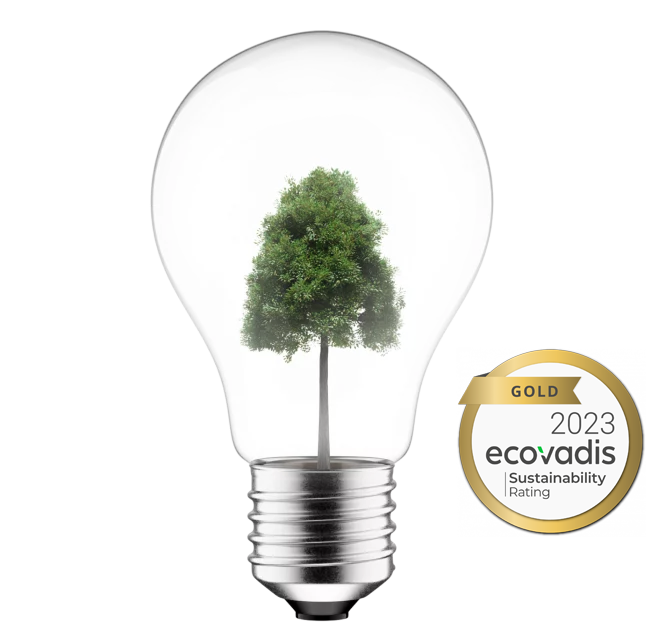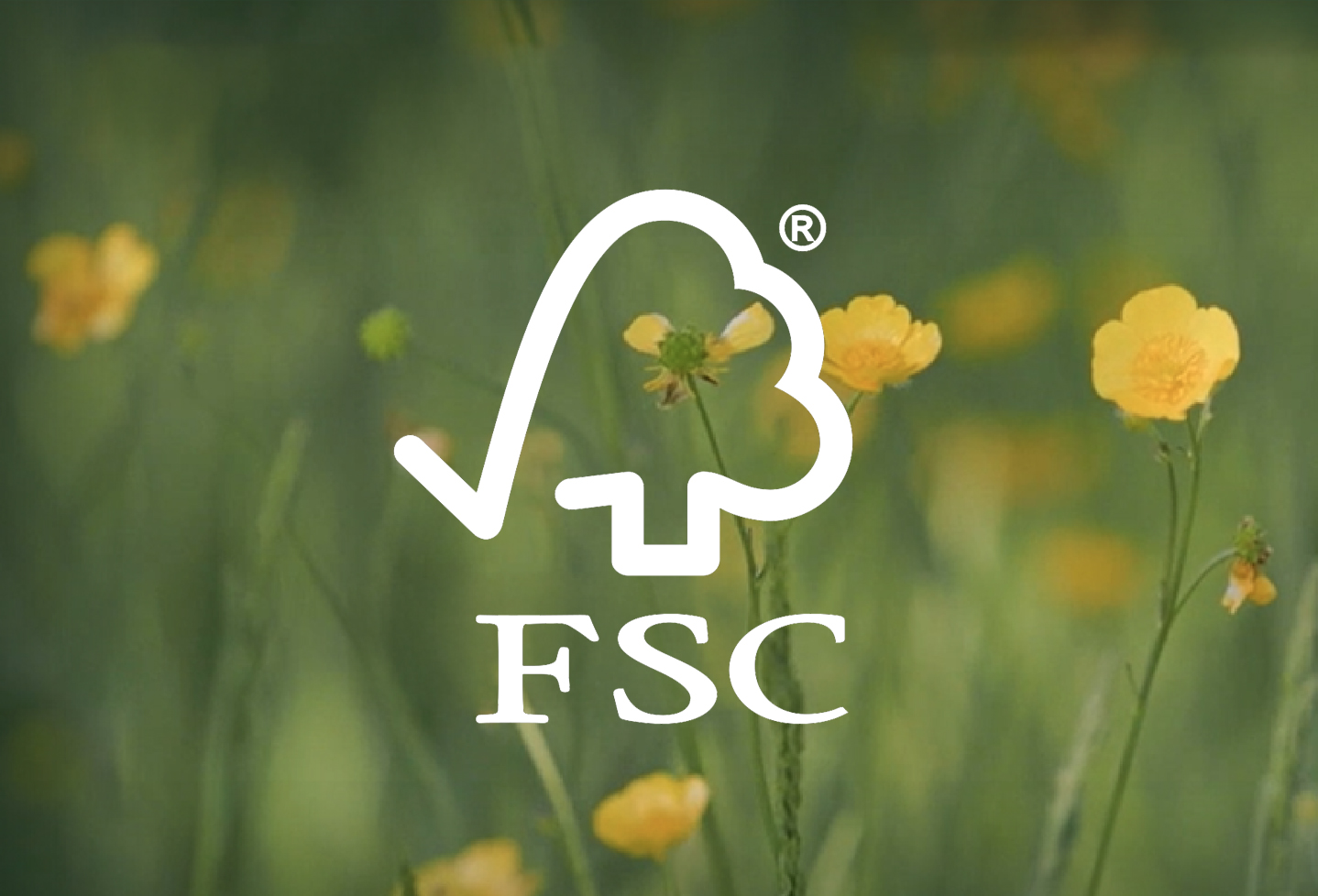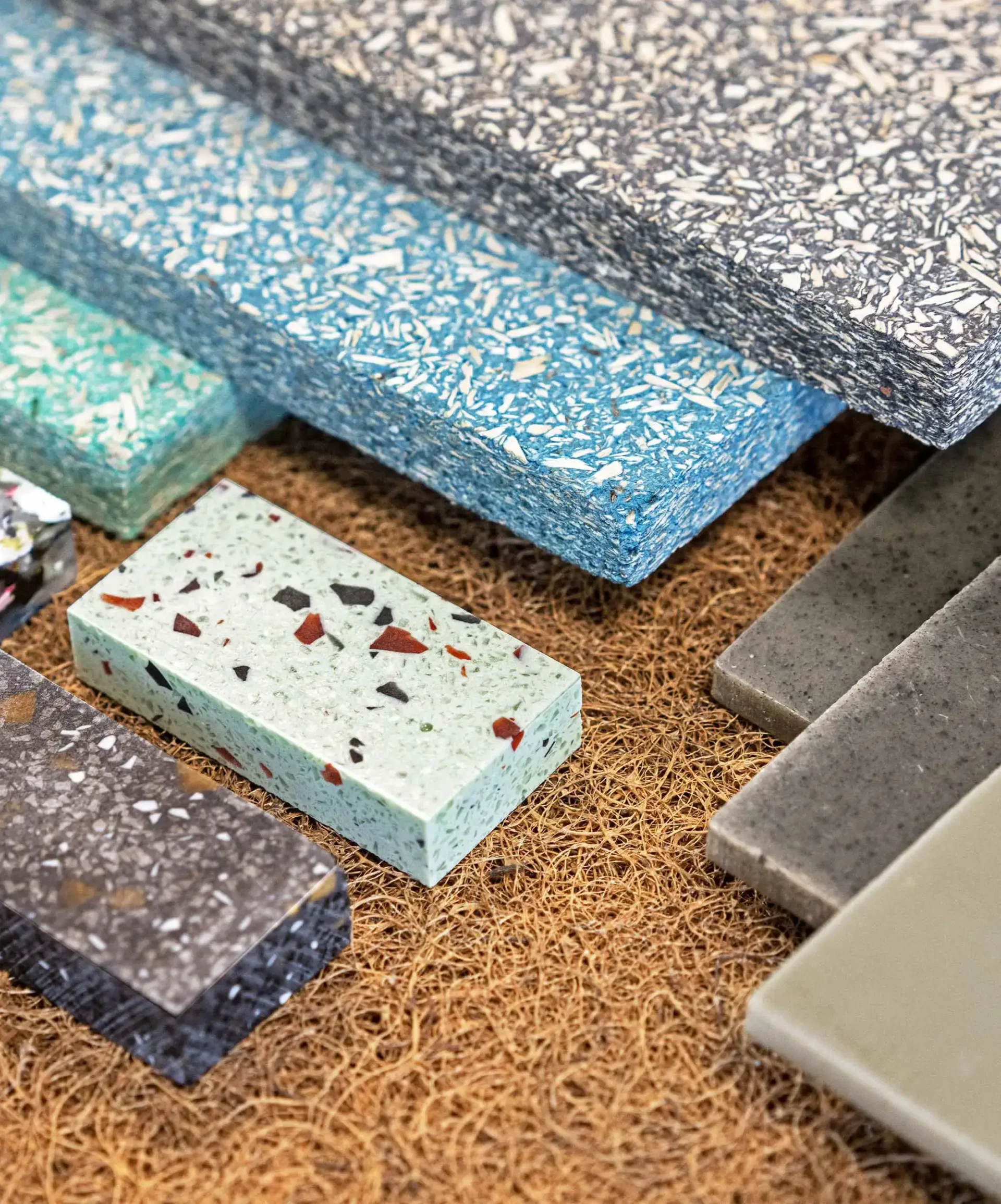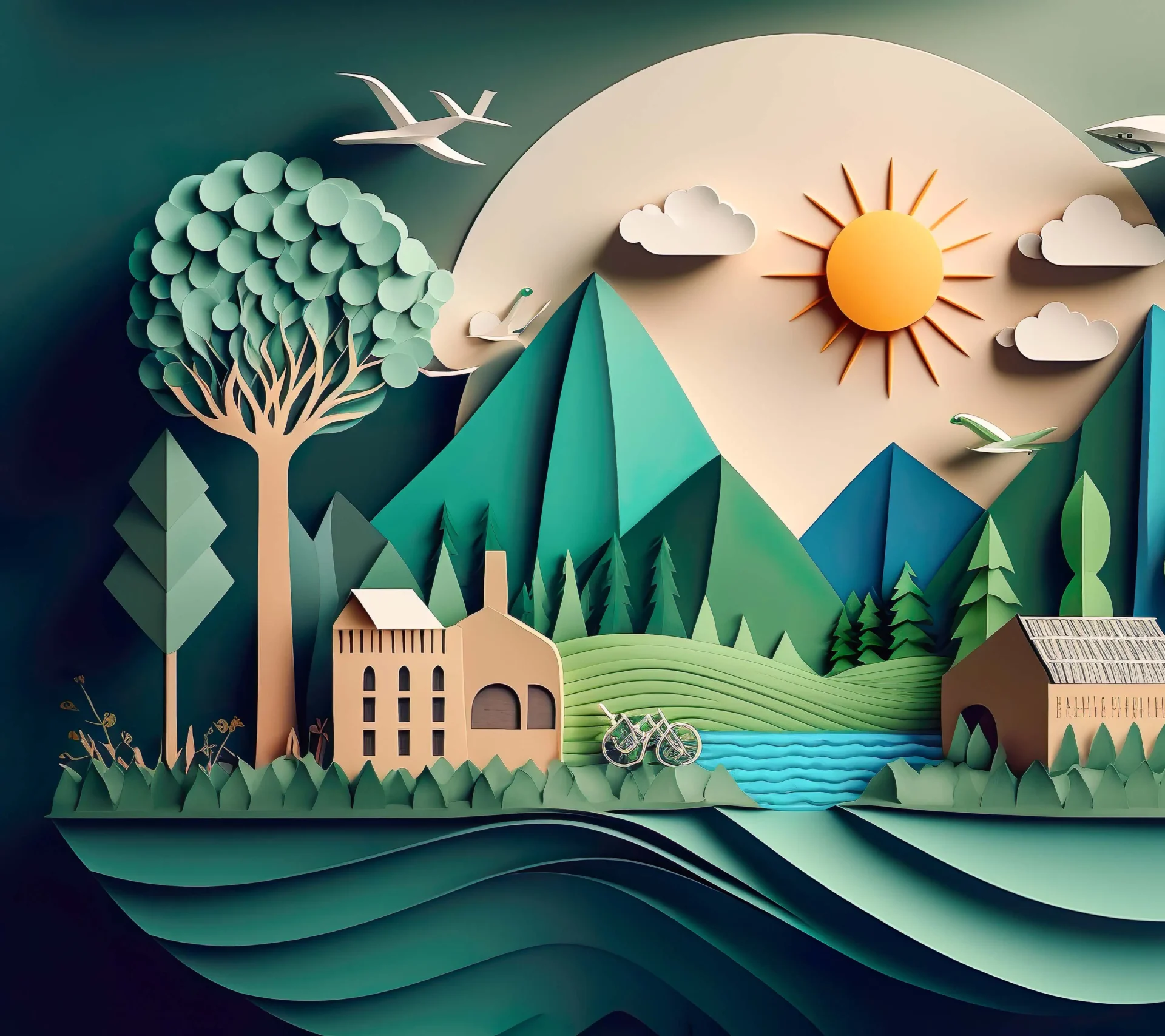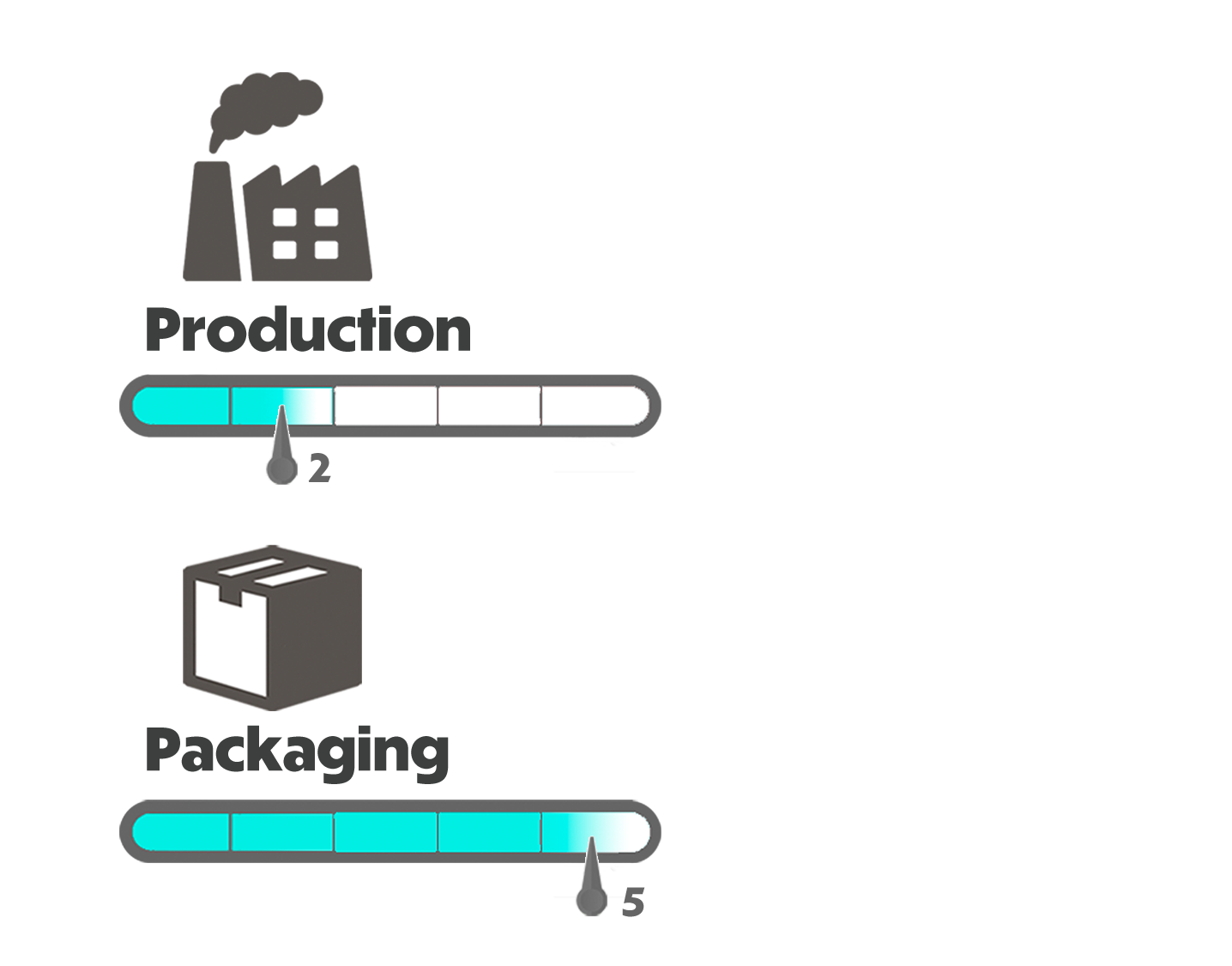Sustainable Material database
Our dedicated sustainability team, experienced in multiple fields is continuously exploring latest developments on sustainability. That suggests new insights into our processes, production techniques, and sustainable materials. We established a material database to support our clients in their projects. We recognize three categories of sustainable materials that can contribute to the environmental footprint we leave behind.
Recycables
Recyclable materials are those that can be processed and turned into new products after their original use has ended. In the context of retail design, this can include materials such as metal, wood, cardboard, paper, glass, and certain plastics.
Biodegradables
These materials are designed to break down naturally through biological processes, without leaving any harmful or toxic substances behind. Examples of biodegradable materials include natural fabrics such as cotton and linen, hemp, as well as plant-based plastics such as polylactic acid (PLA).
Circular
Circular refers to materials that are designed to be used in a closed loop system, where they are reused, recycled, or repurposed, rather than being discarded as waste. We promote a circular economy, where resources are kept in use for as long as possible, minimizing waste and reducing the demand for new resources.


